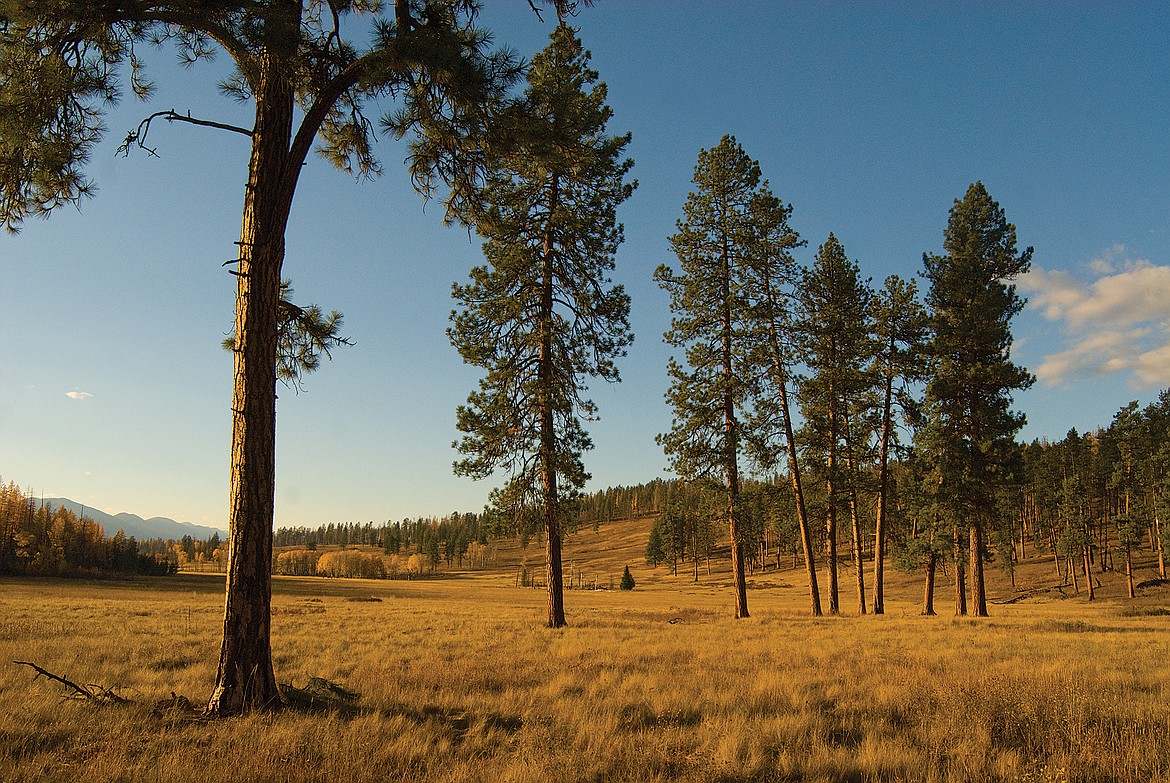Study: Climate change, severe fires, threaten iconic pines
Researchers at the University of Montana recently published a study which predicts a loss of ponderosa pine and Douglas fir-dominant forests in the intermountain west as they shift to other vegetation types like grassland or shrubland due to a combination of climate change and stand-replacing fires.
The study’s findings suggest that as the changing climate creates areas with conditions that are too hot and too dry for young ponderosa pine and Douglas fir seedlings to even begin to regrow, then existing mature forests of those species, if damaged by events like a stand-replacing fire or insect infestation, have little chance of regenerating.
The range of these forests is already expected to decline over the coming centuries as the mature stands die out and are unable to reestablish themselves due to unsuitable climate conditions, leaving those areas to shift to another vegetation type. Any disturbance that could wipe out these mature forests would simply hasten that transition. This study focused on high-severity fires, severe enough to level existing stands, as a force that could accelerate those eventual, more gradual vegetation shifts. By overlaying areas where stand-replacing fires might occur with areas that might be too arid for regrowth, UM researchers found areas of current ponderosa pine and Douglas fir forests that were deemed, “vulnerable to fire-catalyzed vegetation shifts.”
“We expect where species grow to shift with climate change, and then we think of fire as a catalyst, or something that will just speed those shifts. So yeah over the long term, maybe in a hundred years or hundreds of years, the forest would shift, and fire just speeds up that process,” the study’s lead researcher Kimberley Davis said.
The study obtained these findings using computer modeling, inputting datasets from their own research and from organizations like TerraClimate, a climatology lab that has collected global climate data since the late ‘50s. To begin, Davis and her team had to determine exactly what were the conditions in which ponderosa pine and Douglas fir seedlings could grow and those in which they couldn’t.
They did this by sampling over 2,000 ponderosa pine and Douglas fir trees in burned areas from 26 fires that occurred from 1988 to 2007 from the Mexican border north into Canada.
The researchers calculated each tree’s age by digging it up and slicing the trunk at exactly the root/shoot boundary to determine its very first
year of growth. After tallying the number of trees that grew during each of those 19 years, they matched every year’s climate data with the number of trees sprouted that year to see which conditions correlated with regrowth. They found that certain maximum temperatures combined with low moisture indices were conditions in which those species were not able to regrow.
Then using TerraClimate’s gridMET, which contains climate data zoomed to the resolution of four kilometer square parcels, Davis was able to map all areas that had unsuitable climate for ponderosa pine and Doug fir regrowth from the 1980s to the present and into the future using the projection of a 1.3 degree celsius increase in temperature.
Davis then mapped areas considered to have a high probability of burning with a high-severity stand replacing fire which were determined by modeling inputs of satellite-derived fuel load estimates combined with topography and 30 year climate normals, and assuming average fire weather conditions.
By overlaying the second map of probable stand replacing fires with the first map of unsuitably hot and dry regeneration areas, Davis and her team
came up with the amount of ponderosa pine and Douglas fir range that is “vulnerable” to accelerated shifts towards another vegetation type due to fire.
Given this overlay and future projections, the study found that nearly 16% and 10% of current ponderosa pine and Douglas fir forests, respectively, would, by the end of the 2030s, be vulnerable to transitioning to other vegetation types like grassland or shrubland if burned by by a stand-replacing fire.
The study can be read in the journal Environmental Research Letters and is publicaly available online at https://iopscience. iop.org/article/ 10.1088/1748-9326/ abb9df.


